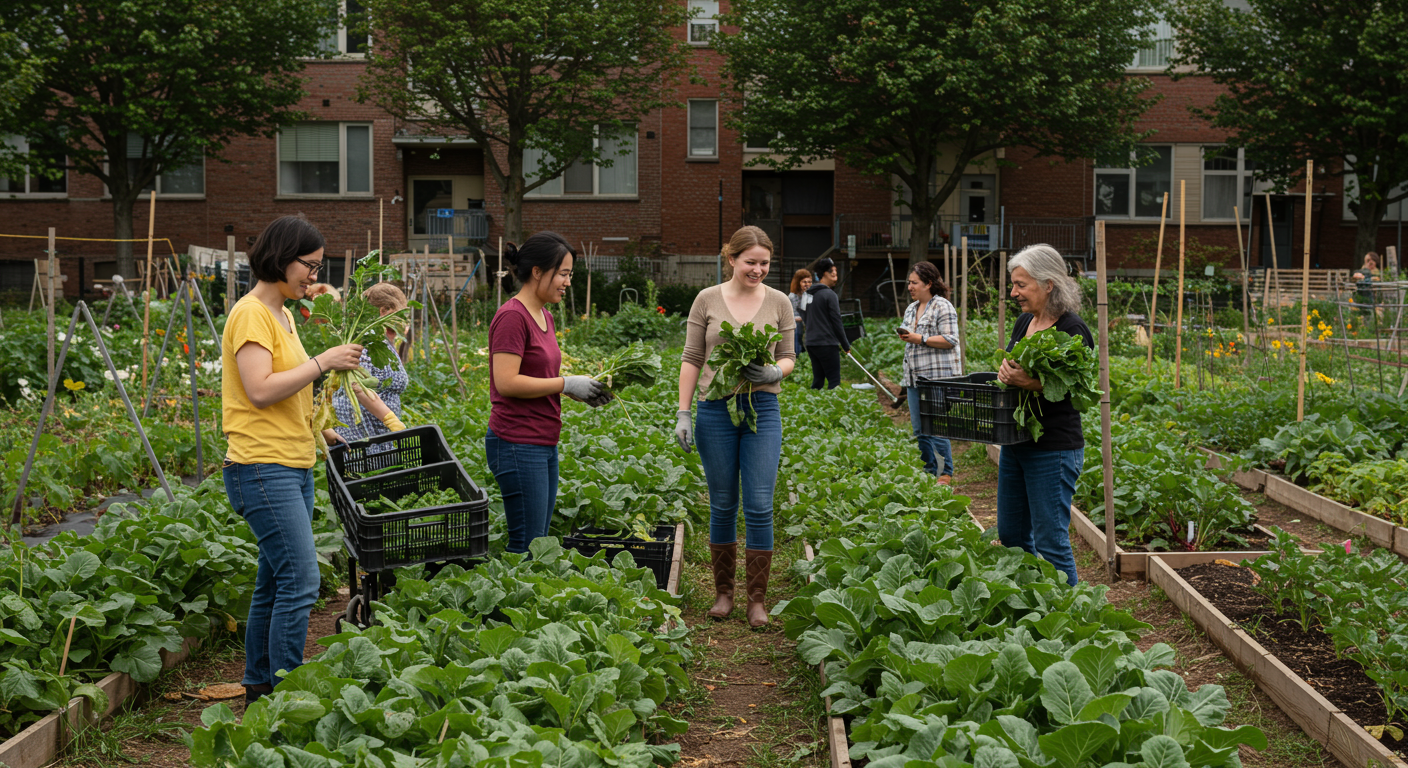Transforming your urban space into a thriving garden is more than just a trend; it's a commitment to sustainable living, community engagement, and a healthier lifestyle. This guide is crafted for green-living experts like you, offering in-depth strategies to maximize your urban gardening efforts. We'll explore how to cultivate fresh, healthy produce while minimizing your environmental impact, building community connections, and enjoying the financial benefits of a budget-friendly, sustainable approach.

Deep Dive into Urban Gardening for Eco-Conscious Living
Urban gardening offers a unique opportunity to connect with nature, even in the most built-up environments. By growing your own food, you significantly reduce your carbon footprint associated with transportation and packaging. Moreover, you gain access to fresh, organic produce, free from harmful pesticides. This section delves into the core principles of sustainable urban gardening, focusing on soil health, water conservation, and plant selection.
Advanced Strategies and Insights
Planning and Design
- Space Optimization: Maximize your space through vertical gardening techniques like using trellises, hanging baskets, and stacked planters. Consider a balcony, rooftop, or even a small patio.
- Microclimate Analysis: Understand the sunlight, wind patterns, and temperature variations in your urban space. This knowledge is crucial for selecting the right plants and optimizing their growth.
- Companion Planting: Utilize companion planting techniques to support plant health and deter pests naturally. Examples include planting basil near tomatoes or marigolds to ward off nematodes.
Soil Health and Composting
- Soil Testing: Conduct a soil test to determine the pH level and nutrient content. Amend your soil accordingly to create an optimal growing environment.
- Composting: Implement a composting system to recycle kitchen scraps and yard waste into nutrient-rich compost. This reduces waste and provides a natural fertilizer.
- Vermicomposting: Consider vermicomposting (using worms) for small spaces. It's highly efficient and produces excellent compost.
Water Conservation
- Rainwater Harvesting: Collect rainwater using barrels or other containers. This reduces your reliance on municipal water sources.
- Drip Irrigation: Install a drip irrigation system to deliver water directly to the roots of your plants, minimizing water waste.
- Mulching: Apply organic mulch (e.g., straw, wood chips) around your plants to retain moisture and suppress weed growth.
Optimizing Your Sustainable [Home/Travel/Consumption]
Plant Selection
- Choose appropriate plants: Select plants that thrive in your local climate and space constraints. Consider growing vegetables, herbs, and fruits that you enjoy consuming.
- Heirloom Varieties: Prioritize heirloom varieties for their superior flavor, adaptability, and seed-saving potential.
- Succession Planting: Implement succession planting to extend your harvest season. Plant crops in intervals to ensure a continuous supply of fresh produce.
Pest and Disease Management
- Prevention: Implement preventative measures like choosing disease-resistant varieties, providing adequate spacing between plants, and ensuring proper air circulation.
- Natural Pest Control: Employ natural pest control methods like introducing beneficial insects (e.g., ladybugs) and using organic pest repellents.
- Companion Planting: Utilize companion planting strategies that naturally deter pests.
Case Study: Thriving on an Advanced Sustainable Path
Meet Sarah, an urban gardener in Chicago: Sarah transformed her rooftop into a thriving garden using vertical gardening techniques. She implemented a comprehensive composting system, rainwater harvesting, and drip irrigation. By carefully selecting plants and using companion planting, she reduced her reliance on pesticides and fertilizers. Sarah's garden yields a continuous supply of fresh produce, reducing her grocery bill and connecting her with her community through a local garden club.
Navigating Complex Environmental Challenges
- Pollution Mitigation: Urban gardens can help mitigate the effects of pollution by absorbing pollutants from the air and soil.
- Carbon Sequestration: Plants absorb carbon dioxide, helping to reduce greenhouse gas emissions.
- Biodiversity: Urban gardens create habitats for pollinators and other beneficial insects, contributing to biodiversity.
Integrating Advanced Sustainable Practices
- Seed Saving: Save seeds from your most successful plants to reduce costs and promote genetic diversity.
- Crop Rotation: Implement crop rotation to prevent soil depletion and pest infestations.
- Community Engagement: Participate in community gardening initiatives, workshops, and farmers' markets to connect with other gardeners and share your knowledge.
Scaling Your Impact: Beyond Personal Choices
- Advocacy: Advocate for policies that support urban gardening and sustainable food systems.
- Education: Share your gardening knowledge with others and inspire them to adopt sustainable practices.
- Community Involvement: Organize workshops, garden tours, or community events to promote urban gardening and foster a sense of community.
Expert-Level Green Living Insights
- Vertical Gardening Systems: Consider advanced vertical gardening systems for small spaces like green walls and modular planters. These are especially good for herbs and leafy greens.
- Hydroponics and Aquaponics: Explore hydroponic and aquaponic systems for efficient food production, particularly if you have limited soil access.
- Soil Remediation: Learn techniques for remediating contaminated soil in urban environments to make it safe for growing food.